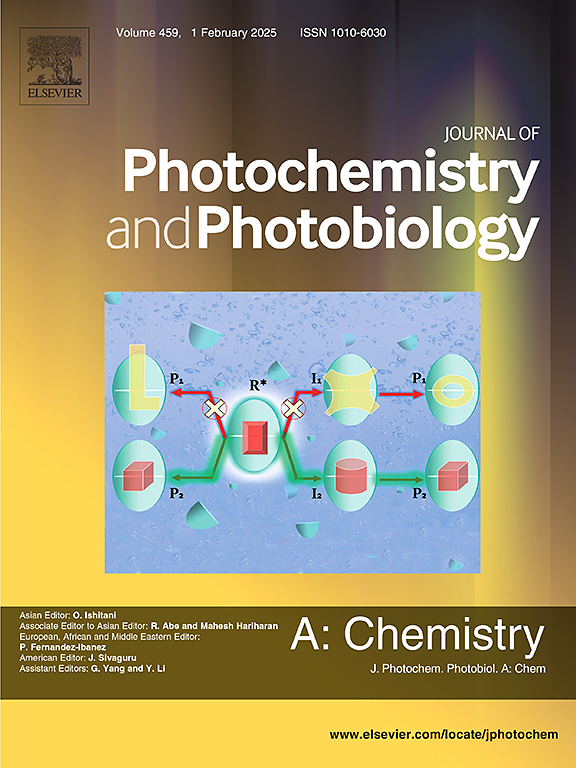Highly selective fluorescent detection of Al3+ and HSO4− using supramolecular coordination polymers in aqueous solutions
IF 4.1
3区 化学
Q2 CHEMISTRY, PHYSICAL
Journal of Photochemistry and Photobiology A-chemistry
Pub Date : 2025-03-26
DOI:10.1016/j.jphotochem.2025.116412
引用次数: 0
Abstract
The reactions of Zn(hfacac)2 with ligand 3,6-di(pyridin-4-yl)-9H-carbazole (L1) and 9-methyl-3,6-di(pyridin-4-yl)-9H-carbazole (L2), respectively, under supramolecular self-assembly conditions, yielded two coordination polymers 1 and 2. Structural analysis by single crystal X-ray diffraction showed both complexes adopt similar long-chain structures. The successful application of complex 1 to the detection of Al3+ in aqueous solution demonstrated its high sensitivity. Notably, complex 1 also detect HSO4− in water and processed into test paper for on-site analysis and detection with good anti-interference performance. These findings indicate that complex 1 is a promising functional platform with dual fluorescence-based sensing capabilities for Al3+ and HSO4−.
求助全文
约1分钟内获得全文
求助全文
来源期刊
CiteScore
7.90
自引率
7.00%
发文量
580
审稿时长
48 days
期刊介绍:
JPPA publishes the results of fundamental studies on all aspects of chemical phenomena induced by interactions between light and molecules/matter of all kinds.
All systems capable of being described at the molecular or integrated multimolecular level are appropriate for the journal. This includes all molecular chemical species as well as biomolecular, supramolecular, polymer and other macromolecular systems, as well as solid state photochemistry. In addition, the journal publishes studies of semiconductor and other photoactive organic and inorganic materials, photocatalysis (organic, inorganic, supramolecular and superconductor).
The scope includes condensed and gas phase photochemistry, as well as synchrotron radiation chemistry. A broad range of processes and techniques in photochemistry are covered such as light induced energy, electron and proton transfer; nonlinear photochemical behavior; mechanistic investigation of photochemical reactions and identification of the products of photochemical reactions; quantum yield determinations and measurements of rate constants for primary and secondary photochemical processes; steady-state and time-resolved emission, ultrafast spectroscopic methods, single molecule spectroscopy, time resolved X-ray diffraction, luminescence microscopy, and scattering spectroscopy applied to photochemistry. Papers in emerging and applied areas such as luminescent sensors, electroluminescence, solar energy conversion, atmospheric photochemistry, environmental remediation, and related photocatalytic chemistry are also welcome.

 求助内容:
求助内容: 应助结果提醒方式:
应助结果提醒方式:


